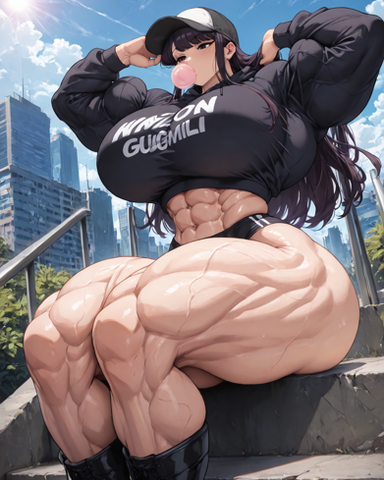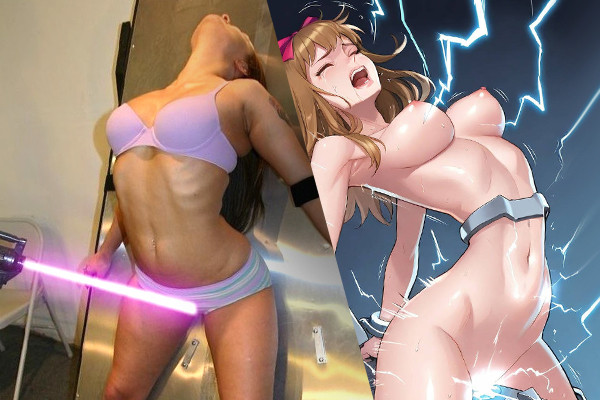HOME | DD
 Cattype — Chibi Yokai
Cattype — Chibi Yokai

Published: 2013-05-17 00:35:56 +0000 UTC; Views: 15604; Favourites: 239; Downloads: 31
Redirect to original
Description
I made these as part of a background for a yokai themed side blog on Tumblr. They're actually not going to be colored like this in the finished background. I just colored them so I could add them to my portfolio. When you make a portfolio, you need to highlight your passions. My passion is monsters. Which is why it's important to me that my monster designs pop, even if they're just pencil sketches.I'm planning on making the finished background sort of checker board-ish. Which is why they're all contained in squares.
Drawing them in squares actually turned out to be an interesting exercise in character design. Limiting them to that amount of space while trying to use as much space as I could made me push the shapes in ways I might not have thought of otherwise. I think I might redraw a few of them just to see if I can push them even more.
Below you'll find a short description of each yokai. As well as some links and books where you can find more information on them. If you have any interest in yokai or monsters in general, please check them out. ^u^
I also included the original sketches as I posted them on Instagram just to remind people that I have an Instagram and I post art on it .






 ;9u9
;9u9Nekomata
A cat that has gained an extra tail and supernatural powers with extreme age. It's usually depicted with either two tails or one partially tail split in two. They have the ability to control corpses like puppets and make themselves giant-sized. They are extremely vengeful and will use their powers to exact revenge against any former human owner that has mistreated them.
Links
Obakemono Project
Hyakumonogatari Kaidankai
Books
Yokai Attack!: The Japanese Monster Survival Guide by Hiroko Yoda and Matt Alt
The Night Parade of One Hundred Demons: a Field Guild to Japanese Yokai by Matthew Meyer
Previously posted on Instagram
Oni
A vicious ogre-like giants with horns and huge fangs and tusks. They wear tiger-skin loin clothes and often carry a large iron bat with spikes called a kanabo. They usually have either red or blue skin and sometimes have three eyes.
Oni are often translated in English as "devil" or "demon". However, just because something in another culture is similar to something in your culture doesn't mean it shares the same symbolism or behaves in the same way. Like demons, oni are generally malicious in nature and they do torture souls in the afterlife. But unlike demons in western tradition, which are meant to be personifications of evil, onis can become good and or can be fiercely protective. While onis often play the villain in many Japanese folk stories, it maybe better to think of them more as personifications of power than evil.
LINKS
Obakemono Project
Matthew Meyer's Yokai-a-Day
Monstropedia
BOOKS
Yurei Attack!: The Japanese Ghost Survival Guide by Hiroko Yoda and Matt Alt
Ninja Attack!: True Tales of Assassins, Samurai, and Outlaws by Hiroko Yoda and Matt Alt
The Anime Companion by Gilles Poitras
A Field Guide to Demons, Vampires, Fallen Angels, and Other Subversive Spirits
The Anime Companion: What's Japanese in Japanese Animation by Gilles Poitras
The Night Parade of One Hundred Demons: a Field Guild to Japanese Yokai by Matthew Meyer
Japanese Ghosts and Demons: Art of the Supernatural by Stephen Addiss
Previously posted on Instagram
Kamikiri
A yokai that stealthily sneaks up on women and cuts their hair with it's claws. It may have been more feared in times when long hair was the norm in Japan.
LINKS
Obakemono Project
Matthew Meyer's Yokai-a-Day
Monstropedia
BOOKS
The Night Parade of One Hundred Demons: a Field Guild to Japanese Yokai by Matthew Meyer
Previously posted on Instagram
Akaname
A yokai with a long slimy tongue that sneaks into poorly kept bathrooms at night to lick the scum and grim off the bathtub. They're not agressive and will likely run away when a human comes near, but they are extremily unsanitary creatures and can spread disease. Since akaname only haunt dirty bathrooms, the best way to ward them off is to keep your bathroom clean and grime free. Or you could keep a badger in your bathroom. They're said to be afraid of badgers.
LINKS
Obakemono Project
Matthew Meyer's Yokai-a-Day
Monstropedia
BOOKS
Yokai Attack!: The Japanese Monster Survival Guide by Hiroko Yoda and Matt Alt
The Night Parade of One Hundred Demons: a Field Guild to Japanese Yokai by Matthew Meyer
Previously posted on Instagram
Nue
A yokai that induces illness and brings bad luck to anyone who comes near it. It also has the ability to disguse itself as a storm cloud and fly. It's most often described as having the head of a monkey, the body of a tanuki , the legs of a tiger, and a snake for a tail. Some say that the nue's cobbled together apperence is really the result of the human mind's attempt to comprehend its true form.
LINKS
Obakemono Project
Matthew Meyer's Yokai-a-Day
Monstropedia
BOOKS
Yokai Attack!: The Japanese Monster Survival Guide by Hiroko Yoda and Matt Alt
Previously posted on Instagram
Nurarihyon
A strange elderly man with a long gourd-shaped head that slips into houses in the evening when everyone is busy in such a stately manner that everyone assumes that he's the owner of the house- including the entire serving staff and even the real owners of the house. He casually helps himself to food and drink while the servants (and house owners) serve him until he eventually slips out again. It's only after he leaves that the spell is lifted and anyone realizes what happened. Nurarihyon is also said to be the general of yokai and the leader of the Hyaki Yakyo, a ghostly procession of yokai.
LINKS
Obakemono Project
Matthew Meyer's Yokai-a-Day
Monstropedia
BOOKS
The Night Parade of One Hundred Demons: a Field Guild to Japanese Yokai by Matthew Meyer
Previously posted on Instagram
Kasa Obake
An old paper umbrella that has come to life after a long, long period of time. It typically was one eye and a leg for a handle. Sometimes it has a pair of gangly arms or a long tongue. Kasa-Obake is part of a catagory of yokai known as tsukumogami or artifact spirits.
LINKS
Obakemono Project
Monstropedia
BOOKS
Yokai Attack!: The Japanese Monster Survival Guide by Hiroko Yoda and Matt Alt
The Night Parade of One Hundred Demons: a Field Guild to Japanese Yokai by Matthew Meyer
Kappa
A small amphibious yokai that lives in rivers and lakes. Their most notable feature is the small plate on the top of their heads that they must always keep wet. If the plate ever dries up, the kappa will lose all its strength. They are also said to have three anuses. They are very smelly and their farts are said to last for several days.
LINKS
Obakemono Project
Matthew Meyer's Yokai-a-Day
Monstropedia
BOOKS
Yokai Attack!: The Japanese Monster Survival Guide by Hiroko Yoda and Matt Alt
The Night Parade of One Hundred Demons: a Field Guild to Japanese Yokai by Matthew Meyer
Myths and Legends of Japan by F. Hadland Davis
The Anime Companion by Gilles Poitras
A Field Guide to Demons, Vampires, Fallen Angels, and Other Subversive Spirits
The Anime Companion: What's Japanese in Japanese Animation by Gilles Poitras
Previously posted on Instagram
Hyosube
The agressive and belligerent cousin of the kappa. They're recognizable by their by their evil toothy grins, thick greasy pelts, and male pattern baldness. While they generally keep away from humans they do enjoy mischief and may attack or curse anyone who even looks at them. Once a woman spied on a couple of hyosube stealing eggplants- their favorite food- from her garden. The next day she turned purple and died.
LINKS
Matthew Meyer's Yokai-a-Day
BOOKS
The Night Parade of One Hundred Demons: a Field Guild to Japanese Yokai by Matthew Meyer
Previously posted on Instagram
If you have any questions about these yokai or any of the links here, please feel free to ask. ^u^
Related content
Comments: 22

👍: 0 ⏩: 0

These are delightful yokai. Thank you for portraying them in your own fashion.
👍: 0 ⏩: 0

I love your chibi yokai!
I actually used some of your yokai drawings in an assignment. I created an imaginary game based on spirits, like yokai, and created the user interface for it for a class I was in. Of course I gave you full credit
👍: 0 ⏩: 1

Thanks! That's so cool! I'd love to see it. XD
I hope you enjoy my more recent yokai too. ^u^
👍: 0 ⏩: 0

Aw, how cute!
I just heard about the Akaname from a Japanese podcast I'm listening to right now. It's a funny, yet scary, creature.
👍: 0 ⏩: 1

Thanks! (^u^)
What's the podcast? Is it a podcast about Japan or a podcast in Japanese?
👍: 0 ⏩: 1

JapanesePod101.com, a Japanese learning podcast.
👍: 0 ⏩: 0

What's absolutely funny is that I have the Ghibli movie 'Pom Poco' and I've seen it a bunch of times, and I saw the umbrella and my mind instantly thought 'Mr.Raccoon, Mr.Raccoon...' X3 xP imma silly girly. Cute nekomata, cause that's my sonic OC, ^*^
👍: 0 ⏩: 0

I only recognize the Nekomata and the Kappa! Great work though! ^^
👍: 0 ⏩: 0

*reads about Hyosube* she turned purple and died? That's quite... random. I've heard of oni, kappa, nue, akaname, and nekomata.
I heard that the umbrella monster was called Karakasa maybe Kasa Obake is an alternate name? (Obake are ghosts, and the paper umbrella is called a Karakasa, so I guess both are fine if we assume that Kasa Obake means "(paper)umbrella ghost". )
👍: 0 ⏩: 1

Actually, "obake" doesn't just mean "ghost". It can be used for a variety of supernatural entities.
Here's a definition taken from an article on Hyakumonogatari Kaidenkai entitled How Do You Say Ghost in Japanese?:
"お化け/化け物 – obake/bakemono お化け (changing) + 物 (thing) – The terms refer not specifically to yūrei but translate in usage to something closer to supernatural creature. Obake and bakemono use the kanji 化 (bakeru) which carries the meaning of to adopt a disguise or change form, with the implication of changing for the worse."
Link:hyakumonogatari.com/2011/07/18…
(I highly highly recommend Hyakumonogatari BTW. It's a fantastic source for Japanese monster folklore.)
👍: 0 ⏩: 1

I didn't say it only meant ghost, although thank you for the clarification.
Thanks for the link! Let the yokai hunt begin!
👍: 0 ⏩: 0

Wow, thank you so much for all the information, it's really helpful!
👍: 0 ⏩: 0



































